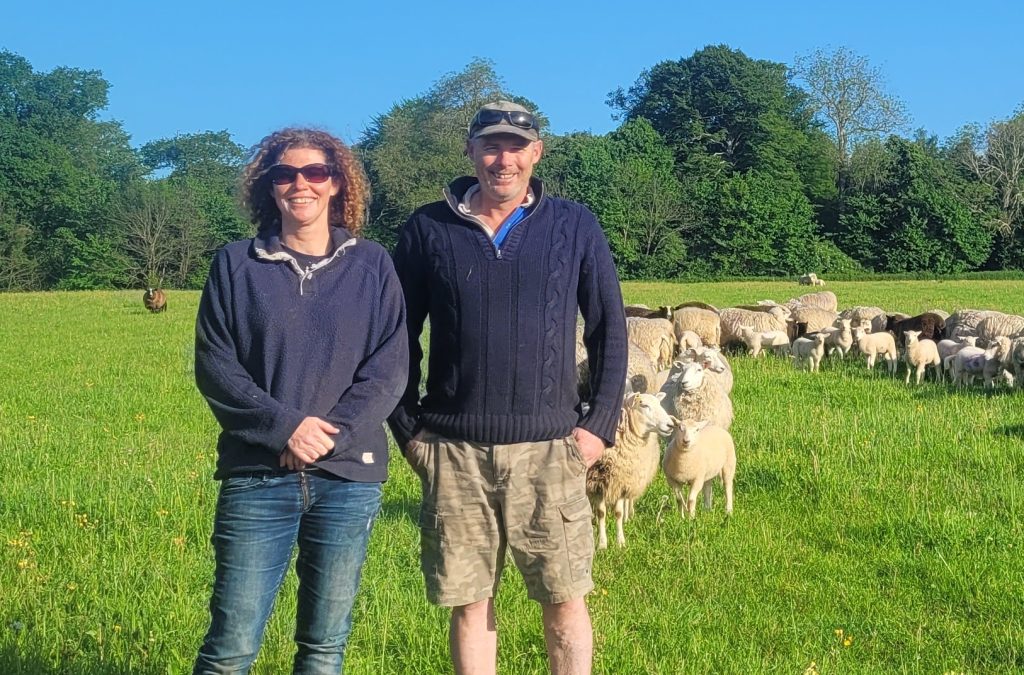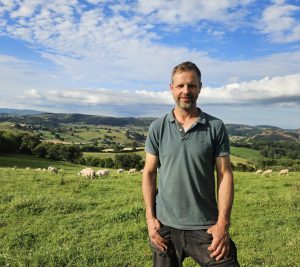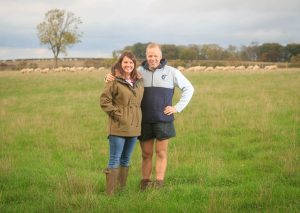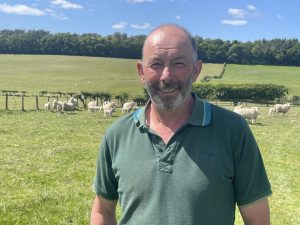with thanks to Paul and Madeline Crawley, Courthill Farm, Arundel, West Sussex
When Paul and Madeline Crawley decided to change their flock damline, they were aware that selecting maternal genetics was for the long term. “We realised they would have an impact on the flock for at least 10 years and since time is our biggest constraint, we were searching for a damline that had that get up and go,” she says.
The Highlander has so much vigour; 95% lamb within the first 17 days.
“Vigour is what Innovis says its genetics offer on the tin, so we decided to invest in the Highlander; we wanted to maximize the number of live, vigorous lambs out of robust, easy to lamb ewes that look after their lambs, and that’s what we’ve got. The Highlander has so much vigour; 95% lamb within the first 17 days. We drift lamb outdoors commencing late March in a 30-acre paddock close to the steading, the lambs are soon up and away and the ewes have plenty of milk,” she explains.
“We used to farm Lleyn ewes put to Charollais and Lleyn rams. The Charollais lambs had great conformation and grew well, the challenge was getting them through the first 48 hours. We wanted to produce a more robust R 3L lamb that would also finish off forage and occasionally some home-grown cereals.
“We run an organic arable enterprise so it is by nature its low input, and substantially lower output than a conventional farm, however we are always driving to improve financial outputs while we’re focused on maximising output from our livestock enterprises, for example we’re rearing an average 160% lambs and 100% calves.”
Courthill Farm flock performance 2018 v 2024
| Sire: Charollais/Lleyn
Dam: Lleyn |
Sire: Primera | Highlander Dam: grading up Highlander |
|
| Ram : ewe ratio | 1 : 50-60 | 1 : 50 – 60 |
| Ram longevity (ave mating seasons) | 5 | 5 |
| Scan % | 180 | 187 (2024) |
| Reared % | 160 | 165 – 170 (2024 target) |
Source: Courthill Farm
When the Crawleys took over the National Trust tenancy 10 years ago, they agreed to restore the then all arable unit to 150 acres of permanent pasture with the remainder in a rotation comprising three years multispecies ley and three years spring barley, and some winter rye/oats/turnip.
“Three to four weeks after lambing we introduce the ewes with lambs to rotation grazing moving on every five to six days; this year we’re planning to leave higher residuals and they continue to rotate around the whole farm for the rest of the year. During the winter months we graze turnips, rye or oats that are purely drilled for winter grazing.”
The couple are breeding and rearing all their own replacements. “Closing up the flock is very important from a health point of view, we don’t want to buy in from unknown sources. Innovis rams are thoroughly tested including for iceberg diseases and it’s also a very customer focused supplier, it stands by its rams after sale.”
She continues: “We split the flock at tupping with half going to Highlander – we introduced the first rams in 2019, and are currently grading up the Lleyns to pure Highlander status. The remainder are crossed to the Primera terminal sire; lambs are reaching 21kg target weight off grass at an average six months.
We select the Highlander for maternal traits including lambing ease, while Primera rams are selected for growth and ease of lambing.
“We don’t use teasers and run one ram to up to 60 ewes, and we’re expecting them to least for five working years.” When it comes to choice of rams, Madeline says they never select on appearance, particularly maternal traits. “Those genetics are invisible. We are former dairy producers and very data focused so we need an evidence base. We select the Highlander for maternal traits including lambing ease, while Primera rams are selected for growth and ease of lambing.”
She adds: “We are always seeking to improve performance and efficiency and attend a lot of conferences, webinars and discussion groups. And after a period of uncertainly as far as future payments are concerned, it’s certainly concentrated the mind on ways to continue to improve productivity and subsequent profitability. We are very proactive and prefer to find out what works best for us and not just sit back and take the payments. We currently believe we have chosen the correct strategy – a combination of Innovis forage bred and reared genetics to complement and maximize output from our forage based organic system.”



